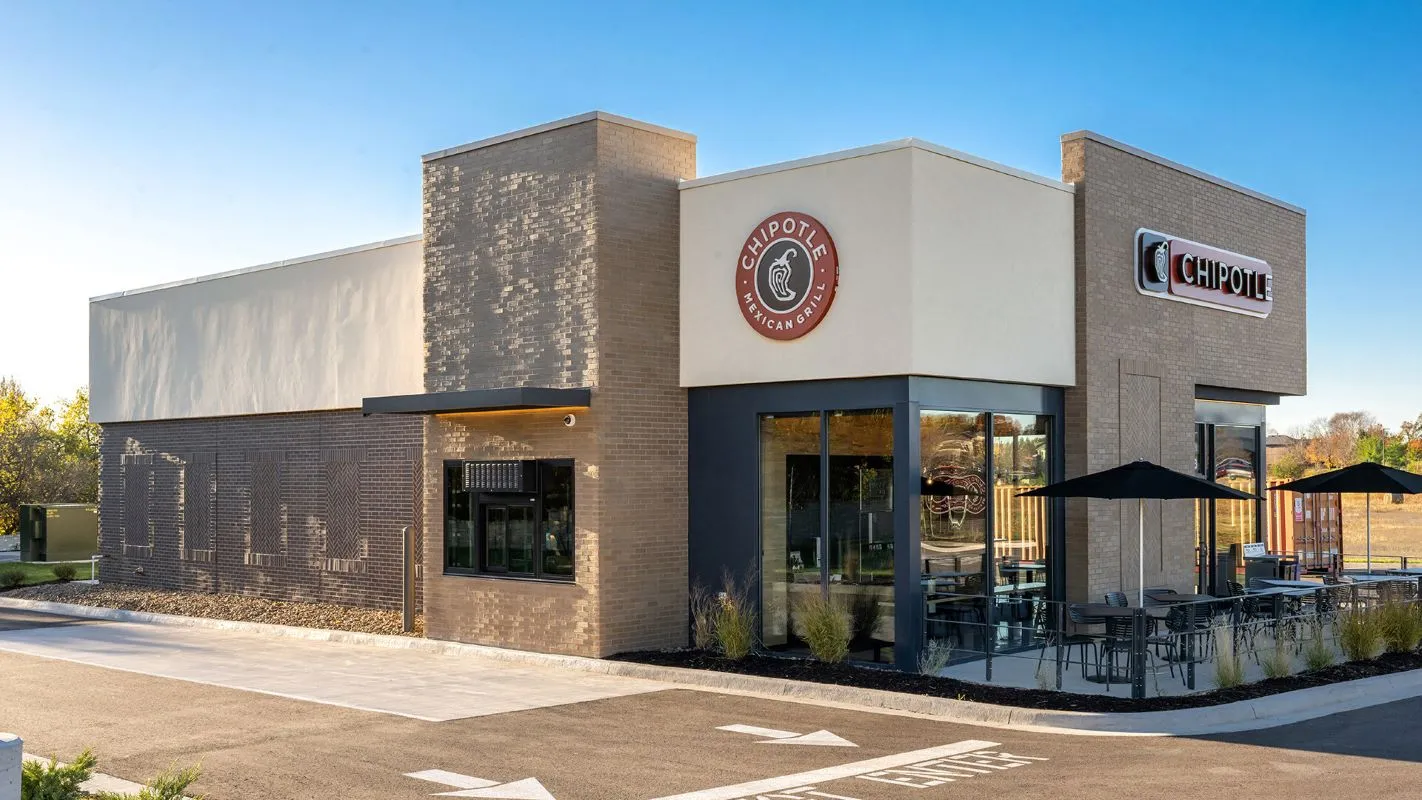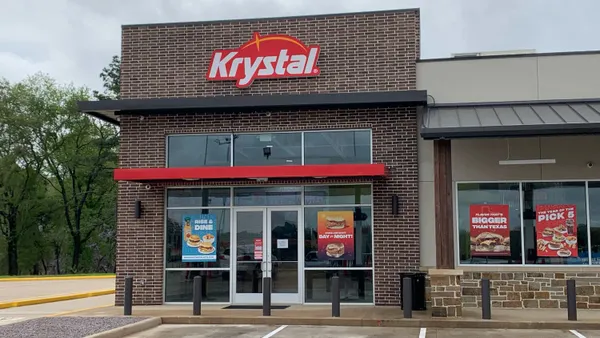2024 was a mixed bag for the restaurant industry. Restaurants faced an uptick in bankruptcies and ongoing challenges related to rising labor and operating costs. Others have closed hundreds of underperforming locations in an attempt to improve the overall health of their systems. Despite this backdrop of challenges, several chains, including Cava, Taco Bell and Chipotle, had stellar years, posting same-store sales and traffic gains.
The success of some other chains deserve mention, including Texas Roadhouse and Wingstop, both of which saw dramatic increases in same-store sales. Texas Roadhouse was a standout in the casual industry as one of the few to actually grow comparable sales this year.
Others are likely happy to see 2024 come to a close.
McDonald’s faced challenge after challenge. After emphasizing its value proposition in the third quarter and recovering from its first same-store sales decline in years, McDonald’s started the fourth quarter with an E. coli outbreak that sickened scores of people and left at least one dead. Starbucks continued to face a number of difficulties, namely traffic declines, and the board suddenly changed leadership in the hope of reviving the brand. TGI Fridays tried to undergo a merger with Hostmore, a U.K. franchisee, but that merger fell through and it then declared bankruptcy.
Check out three of the restaurant industry’s winners and losers of 2024.
Winners

Cava
Very few national brands achieved anything resembling Cava’s level of comparable sales and traffic growth over the last 18 months. Since its IPO in 2023, Cava has maintained continual same-store sales growth, ranging from 2.3% in Q1 of this year to 18% in Q3 2024. In the most recent quarter, its traffic was up 12.9%.
Part of Cava’s strength this year came from its disciplined approach to pricing: Between 2019 and the end of 2023 Cava raised prices by about 12%, compared to a general rise in prices for all goods of 18% and a 30% increase in overall menu prices, CEO Brett Schulman told Restaurant Dive.
When it went public, Cava was still in the process of converting Zoës Kitchens into Cava units, which raised questions about the chain’s ability to sustain robust unit growth without conversions. In Q4 2023, Cava completed its last Zoës Kitchen conversion, according to an earnings call and it reached 309 total restaurants.
Since then, the fast casual chain opened a net 43 units in the first three quarters of the year and executives say it is on track to hit a total of 56 net new openings for 2024. While that is somewhat slower than its 72 net openings in 2023, it is still an impressive pace of development, about 18% net unit growth in one year.
And its new openings have performed very well, with its entry to the Chicago market the best ever for the brand.

Taco Bell
Taco Bell’s U.S. same-store sales grew across all three of the quarters of 2024. That would not normally be enough to qualify a brand as a winner, but legacy QSR brands, like its sister brand KFC, struggled to see consistent sales growth this year, while up-and-coming fast casual brands tended to outpace them.
How did Taco Bell beat the odds?
At the start of the year, Taco Bell launched a value menu, complete with vegetarian options and new menu items. This predated some of the value plays by other QSRs, like Burger King and McDonald’s mid-year $5 meal deal launches, allowing Taco Bell to get ahead on value messaging. Later, the brand launched its $7 Luxe Cravings box, a five-item meal deal that the chain said represented a 55% discount against ordering the items separately.
At the same time, the QSR chain avoided potential brand-damaging effects of discounting with continual new product launches and innovation at the premium end of its menu. Anchoring this strategy was the chain’s Cantina Chicken Menu and LTOs like its Cheesy Street Chalupa. Consumers in Minneapolis got a preview of likely menu innovation at the end of October, when Taco Bell began testing al pastor chalupas in the region.
Yum Brands’ investment in digital technology — digital ordering accounted for $8 billion in systemwide sales at Yum in Q3 — benefited Taco Bell. For example, its investments in loyalty drove Taco Bell’s loyalty program’s 90-day active user base up by 50% year-over-year, Yum CEO David Gibbs said on the company’s Q3 earnings.

Chipotle
Despite a sudden shift in CEO leadership during the third quarter, Chipotle maintained its strategies and initiatives under newly promoted CEO Scott Boatwright.
Among the biggest initiatives that started under former CEO Brian Niccol was a drive to improve throughput. The chain added expeditors, a worker positioned between the salsa and payment station to help package orders, helping boost order processing by five entrees during peak 15-minute periods. Expeditors were in place at 60% of its restaurants as of the third quarter.
While price-sensitive consumers pulled back from fast food chains this year, transaction growth continued throughout the first three quarters of the year at the fast casual giant. Even after the chain faced criticism over inconsistent portion sizes during the summer, the chain reported 3% transaction growth during the third quarter. Chipotle had a successful year of limited-time officers with smoked brisket and chicken al pastor helping drive traffic and boost sales.
Chipotle met many milestones in 2024. It started the year by surpassing $3 million average unit volume and is working toward $4 million. As of the third quarter, its AUVs were over $3.1 million. In November, it opened its 1,000th Chipotlane restaurant. It also began in-store testing of an automated makeline made by Hyphen and an automated avocado processer, dubbed Autocado, from Vebu.
Losers

Starbucks
Starbucks started the year off facing a boycott by some consumers over a lawsuit against Starbucks Workers United’s pro-Palestinian social media posts. In its fiscal Q1 2024, the chain actually managed a comparable sales increase in the U.S., but it was driven by an anemic 1% growth in transactions and a 4% increase in ticket from pricing, menu mix and drinks customization.
To win back Gen Z consumers and occasional customers, Starbucks had pledged to launch three new drinks platforms in six months and it opened up mobile-order-and-pay for all customers. The chain even backtracked on its labor strategy, thawing relations with Starbucks Workers United by eliminating some lawsuits and opening up national bargaining.
But none of it was enough.
Pricing proved a problem and consumers pulled back from spending at the chain. In fiscal Q2, the chain saw a 7% comparable traffic decline in North America, a 6% drop in its fiscal third quarter and a stunning 10% fall in comparable transactions in the last quarter of its fiscal 2024.
To stanch the bleeding, Starbucks undertook significant measures. Laxman Narasimhan was ousted and replaced as CEO by Chipotle’s chief, Brian Niccol, in the late summer. But the chain’s problems are so complex it’s not clear that Niccol can clear things up.
After years of different CEOs promising brand reinventions, Niccol, at the end of October, announced a series of changes to get the brand back to its cafe heritage. And in a short-term move, the chain ended its practice of up-charging for non-dairy milks and promised to hold prices steady for some time.
While the changes may eventually prove meaningful, and Niccol’s accession provoked a flurry of positive press, the chain still had one of the worst years of any of the largest QSR brands in the country.

McDonald’s
McDonald’s had a rough year. The first half of the year began with dips in consumer traffic and its first decline in U.S. same-store sales since 2020.
The chain shifted its focus toward value messaging. During the summer it launched its $5 Meal Deal, which was later extended through the end of the year. That helped drive traffic and same-store sales turned around in the third quarter.
But that momentum halted on Oct. 22, when the chain announced Quarter Pounders in several states were tied to an E. coli outbreak. The outbreak led the chain to remove the burgers from about 3,000 restaurants until the source of the contamination — slivered onions from Taylor Farms — was confirmed. In the days following the outbreak, the chain suffered from daily declines in traffic and sales.
By November, the burgers returned to these restaurants, with about 900 locations switching to an alternate supplier for its onions. Following the fallout from the outbreak, the chain said it invested $100 million to help heavily impacted franchisees recover. It also released a value-oriented campaign that will run through the end of the year, and shared details on its McValue menu that will launch in January.
Many experts expect the long-term impact from the outbreak to be minimal as consumers move past the news cycle, so it is likely that, with a stronger value message, 2025 will be a better year for the chain.

TGI Fridays
Few national brands had as hard a year as TGI Fridays, which started 2024 with the closure of 36 underperforming stores.
Things seemed to improve a bit in the spring, TGI Fridays and Hostmore, a U.K.-based franchisee, began negotiations on a $220 million merger in an effort to strengthen their combined balance sheets. And in June, the brand opened a unit in a Hilton in California in an indication that it saw hotels as a significant growth channel.
But years of sales problems and management upheaval had left the brand significantly weakened. An effort to renovate its menu and add new virtual brands with C3 failed to generate enough of a sales lift to turn things around.
In August, the Hostmore deal was paused and the companies said they were planning to shift towards a fully-franchised business model, which would’ve required selling off about 170 units.
But that was not to be. In September, following a breach of bond covenants, bondholders for Fridays seized control of the assets backing the company’s whole business securitization, including its franchise agreements. During September and October, Fridays closed about 60 stores. By the time the chain filed for Chapter 11 in November, it had lost 40% of its U.S. store base in 11 months.
There have been some recent signs of confidence in the brand. Ray Blanchette, who served as CEO for five years starting in 2018 and is a current franchisee, acquired several company-owned units and intends to continue running them under the Fridays brand banner.
























